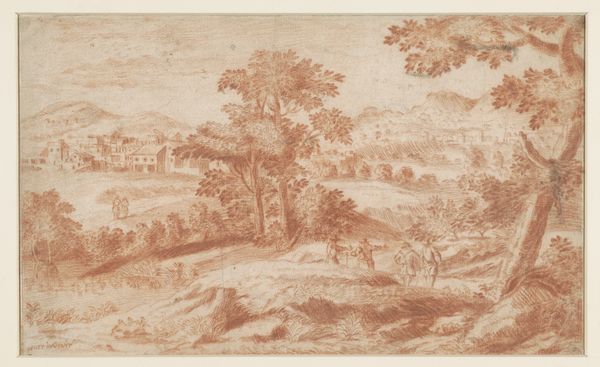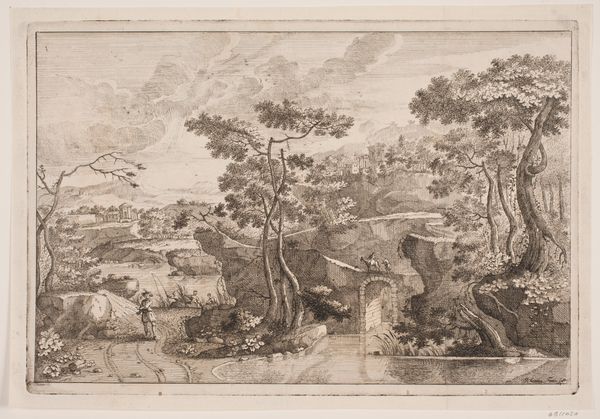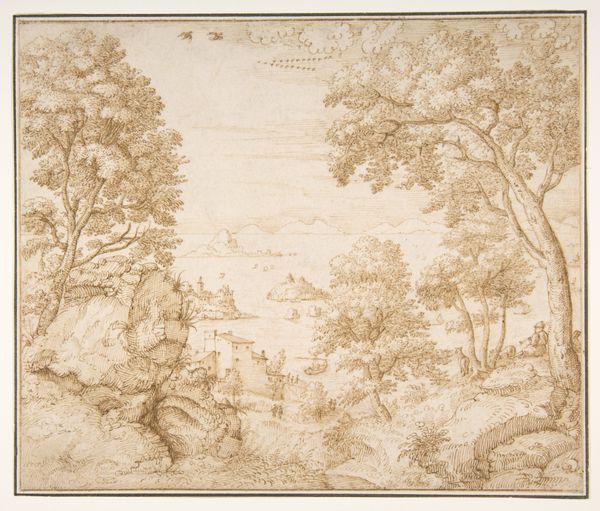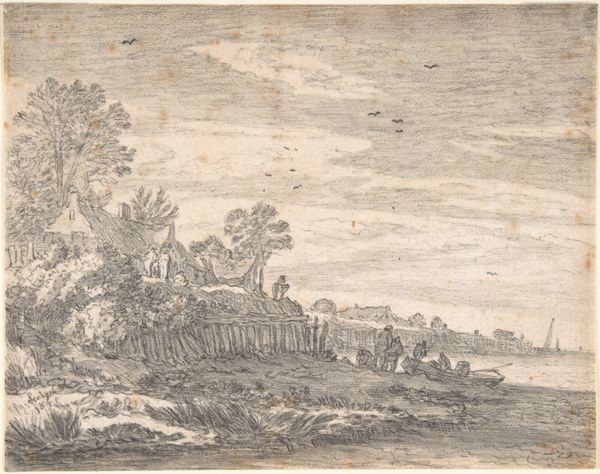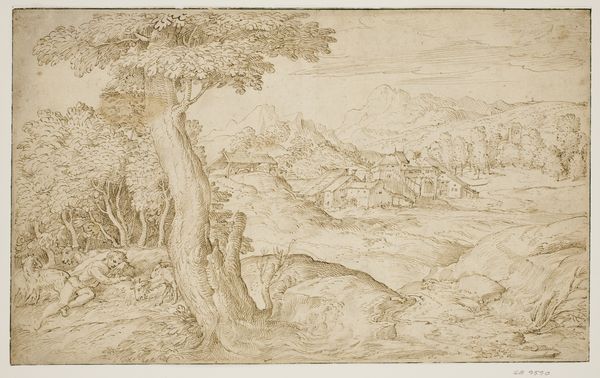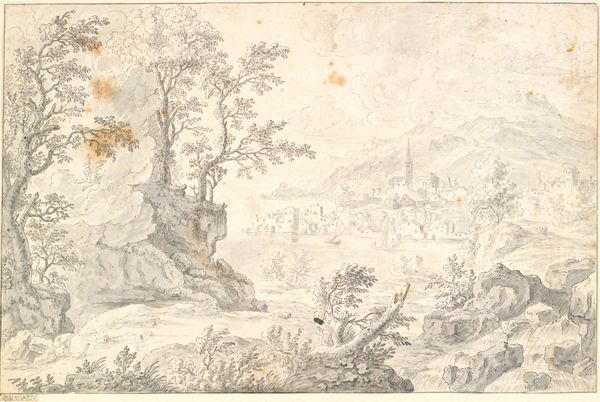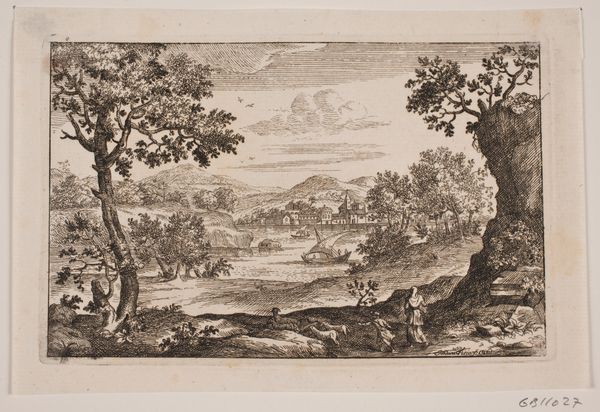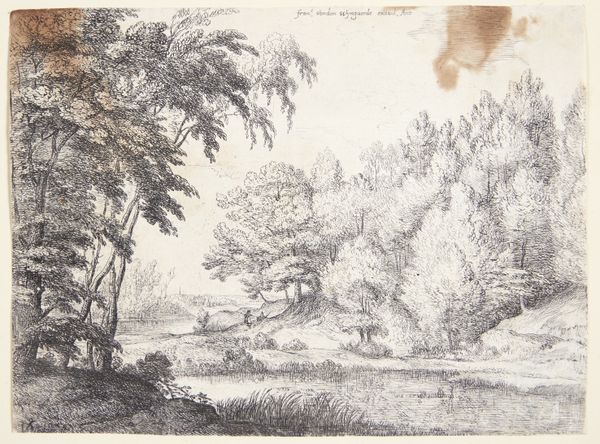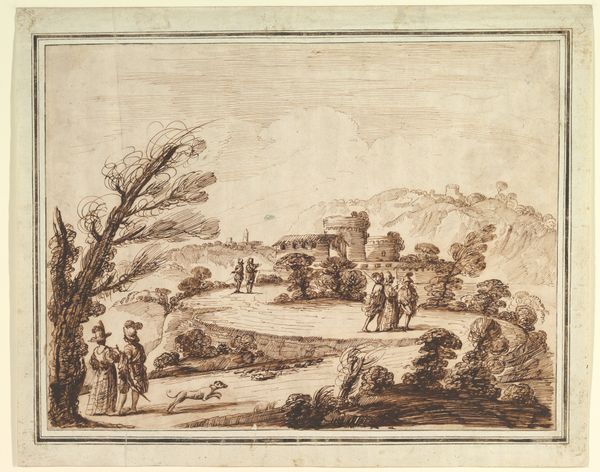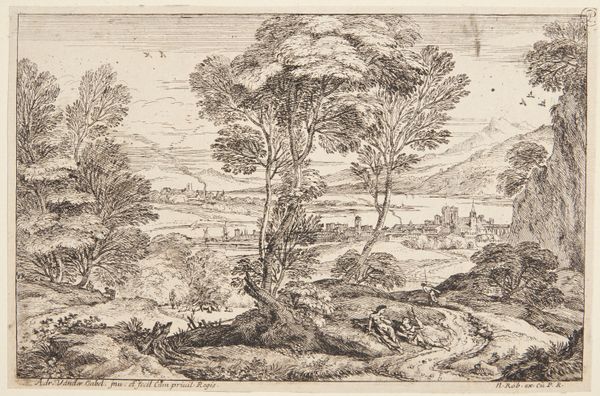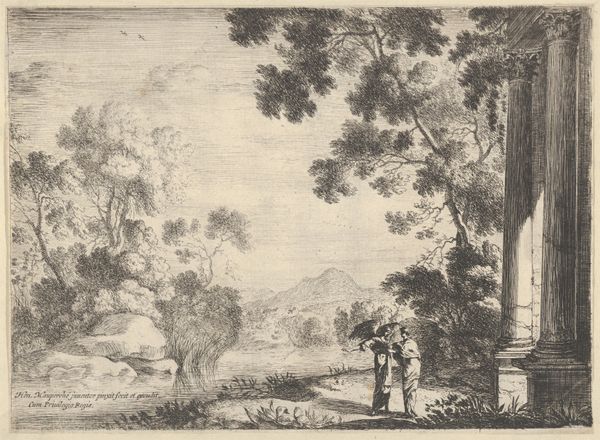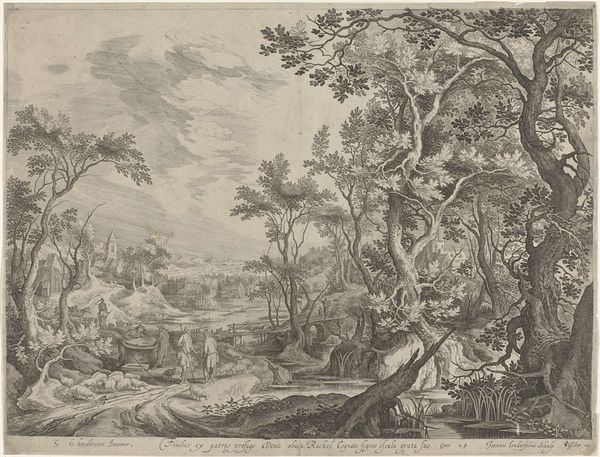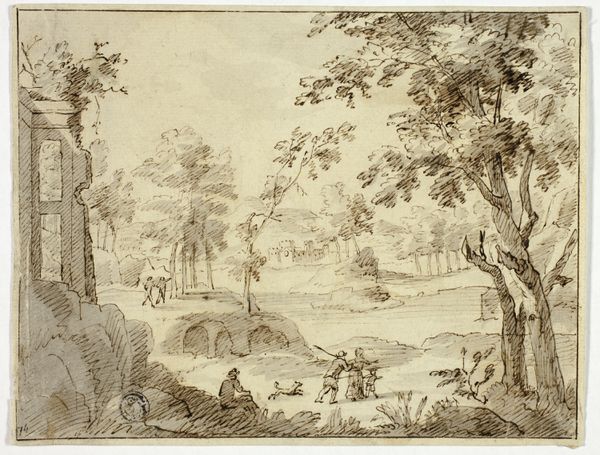
drawing, print, ink
#
tree
#
drawing
#
toned paper
#
baroque
#
ink painting
# print
#
human-figures
#
landscape
#
house
#
figuration
#
ink
#
cityscape
Dimensions: 11-1/4 x 16-15/16 in. (28.6 x 43 cm)
Copyright: Public Domain
Editor: So, this is Aureliano Milani's "Hilly Landscape with Three Figures," made sometime between 1675 and 1749. It's an ink drawing, almost like a print, on toned paper. The reddish-brown ink gives it this antique feel. What catches my eye is the level of detail in a simple landscape – those individual strokes creating depth. How would you approach understanding a piece like this? Curator: For me, the crucial element here is process. Consider the labor invested in producing this image. Think about the sourcing of the ink, likely iron gall ink, which was common then. The preparation of the toned paper itself, the potential for variations in the pulp. The repetitive, almost meditative act of hatching with ink to create form, which, arguably, elevates this 'drawing' to 'high art.' We also see the influence of landscape prints, affordable items driving the demand for the work in the first place. Where would it be consumed, how much would it cost? Editor: That's interesting! I hadn't thought about it in terms of the material effort involved, more in terms of aesthetic choice. Curator: But are the aesthetic choices truly separable from those material constraints? The relative inexpensiveness of ink on paper surely plays a key part in Milani’s selection. Editor: So, you’re saying the perceived 'style' is less about an artistic choice and more about the tools and market at his disposal? Curator: Exactly! Even the conventions of depicting nature— those very specific tree forms — are tied to the printmaking tradition, techniques developed to be efficiently reproducible for consumption by a wider audience. Also the rise of landscape and 'vedute' as subject-matter has to do with the rise of a merchant class and a tourist market with disposable income. How does all of this inform your understanding? Editor: It certainly complicates it, but in a good way. I see now that the image isn't just about a pretty landscape; it's about how landscapes became a commodity and who had access to them through images like these. Thank you, that was really insightful.
Comments
No comments
Be the first to comment and join the conversation on the ultimate creative platform.
